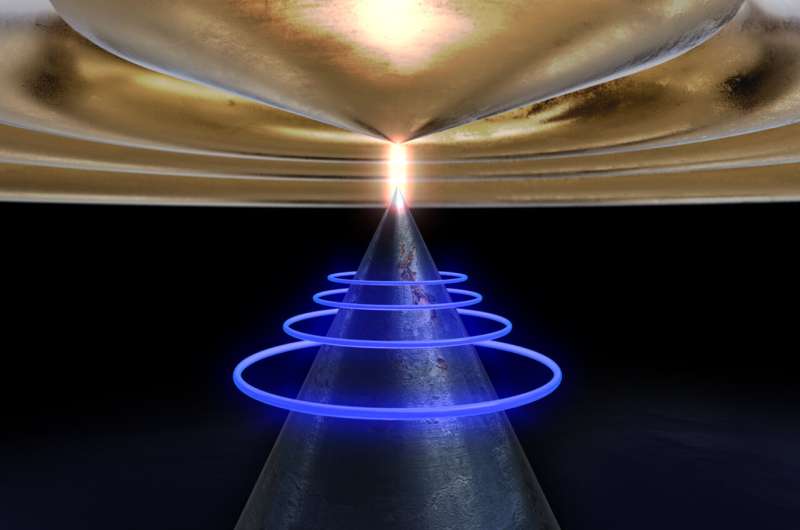Casimir force used to control and manipulate objects

A collaboration between researchers from the University of Western Australia and the University of California Merced has provided a new way to measure tiny forces and use them to control objects.
The research, published today in Nature Physics, was jointly led by Professor Michael Tobar, from UWA's School of Physics, Mathematics and Computing and Chief Investigator at the Australian Research Council Centre of Excellence for Engineered Quantum Systems and Dr. Jacob Pate from the University of Merced.
Professor Tobar said that the result is a new way to manipulate and control macroscopic objects in a non-contacting way, allowing enhanced sensitivity without adding loss.
Once thought to be of only academic interest, this tiny force—known as the Casimir force—is now drawing interest in fields such as metrology (the science of measurement) and sensing.
"If you can measure and manipulate the Casimir force on objects, then we gain the ability to improve force sensitivity and reduce mechanical losses, with the potential to strongly impact science and technology," Professor Tobar said.
"To understand this, we need to delve into the weirdness of quantum physics. In reality a perfect vacuum does not exist—even in empty space at zero temperature, virtual particles, like photons, flicker in and out of existence.
"These fluctuations interact with objects placed in vacuum and are actually enhanced in magnitude as temperature is increased, causing a measurable force from "nothing"—otherwise known as the Casimir force.
"This is handy because we live at room temperature. We have now shown it's also possible to use the force to do cool things. But to do that, we need to develop precision technology that allows us control and manipulate objects with this force."
Professor Tobar said researchers were able to measure the Casimir force and manipulate the objects through a precision microwave photonic cavity, known as a re-entrant cavity, at room-temperature, using a setup with a thin metallic membrane separated from the re-entrant cavity, exquisitely controlled to roughly the width of a grain of dust.
"Because of the Casimir force between the objects, the metallic membrane, which flexed back and forth, had its spring-like oscillations significantly modified and was used to manipulate the properties of the membrane and re-entrant cavity system in a unique way," he said.
"This allowed orders of magnitudes of improvement in force sensitivity and the ability to control the mechanical state of the membrane."
More information: J. M. Pate et al. Casimir spring and dilution in macroscopic cavity optomechanics, Nature Physics (2020). DOI: 10.1038/s41567-020-0975-9
Journal information: Nature Physics
Provided by University of Western Australia




















